Search
Search Results
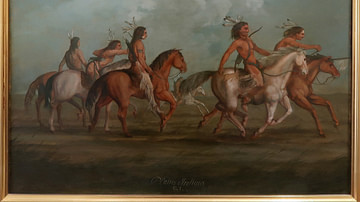
Definition
Plains Indians
The Plains Indians (also known as Native Americans of the Plains and Prairie, Indigenous Peoples of the Great Plains) are the original inhabitants of the western plains of North America, now part of the United States and Canada. They are...
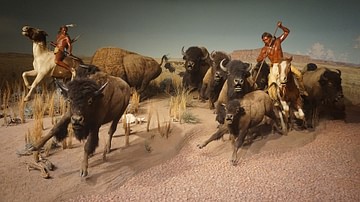
Article
Buffalo and the Plains Indians
The buffalo were essential to the Plains Indians, and other Native American nations, as they were not only a vital food source but were regarded as a sacred gift the Creator had provided especially for the people. Buffalo (bison) supplied...

Image
Plains Indians
Plains Indians, oil on canvas after George Catlin.
Musée du Nouveau Monde, La Rochelle
Photo by Ismoon.
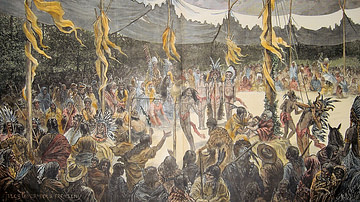
Definition
Sun Dance
The Sun Dance is a ritual ceremony observed by the Plains Indians of the regions of modern Canada and the United States to awaken the earth, renew the community, give thanks for the sun, and petition or give thanks for favors from the Great...
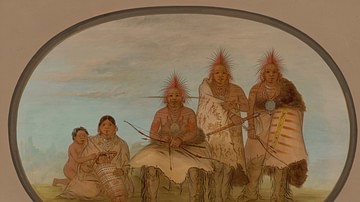
Definition
Pawnee
The Pawnee are a Native American nation of the Plains Indians culture originally from the region of modern Nebraska. Prior to the European colonization of the Americas, they were among the most powerful of the Plains Indian tribes numbering...

Definition
Cheyenne
The Cheyenne are a North American Native nation, originally from the Great Lakes region, who migrated to modern-day Minnesota and then to areas in North Dakota and further southwest. They are associated with the Plains Indians culture and...
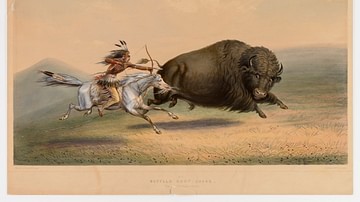
Article
Cheyenne Legends of the Buffalo
Two popular Cheyenne legends are the Origin of the Buffalo and How the Buffalo Hunt Began (also known as The Great Race), both dealing with the importance of the North American bison to the Cheyenne nation. Like others of the Plains Indians...
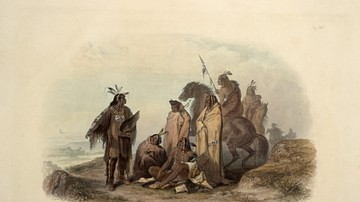
Article
The Sioux who Married the Crow Chief's Daughter
The Sioux who Married the Crow Chief's Daughter is a legend of the Lakota Sioux about Chief Big Eagle who left his people to marry a woman of the enemy Crow nation but never forgot the duties owed to his own people. The story highlights the...
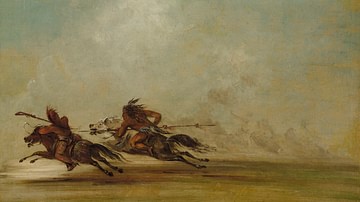
Article
The Brave Who Went on the Warpath Alone and Won the Name of the Lone Warrior
The Brave Who Went on the Warpath Alone and Won the Name of the Lone Warrior is a Sioux tale in the tradition of the hero's journey in which a young person overcomes seemingly impossible challenges and is recognized as a great champion and...
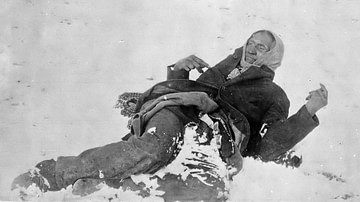
Definition
Wounded Knee Massacre
The Wounded Knee Massacre of 29 December 1890 was the slaughter of over 250 Native Americans, mostly of the Miniconjou people of the Lakota Sioux nation, by the US military at Wounded Knee Creek, South Dakota. Although the US government defined...